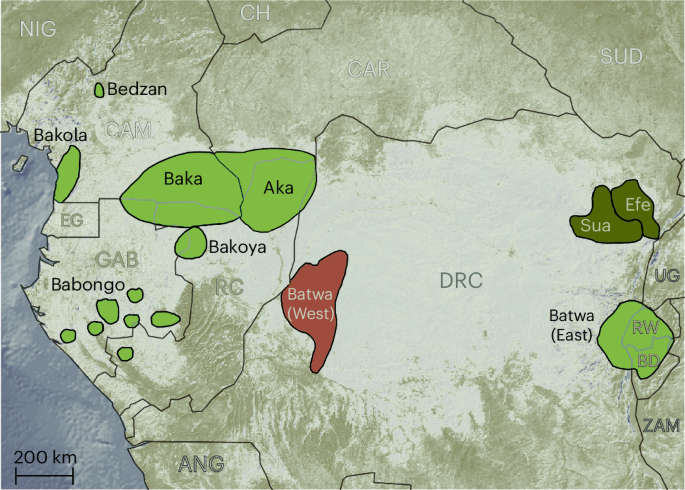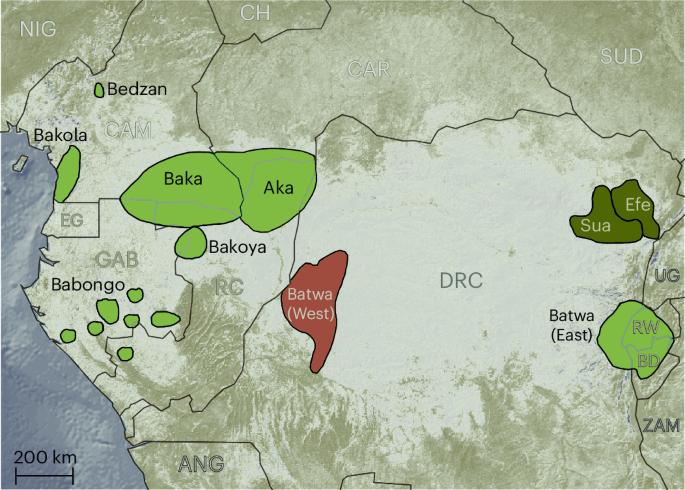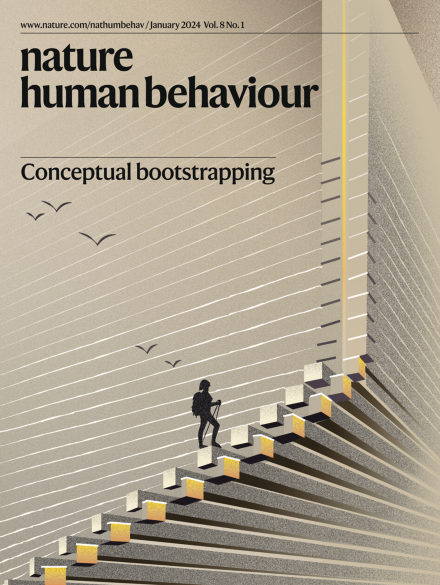中非狩猎采集者文化和语言演变的深层历史
IF 15.9
1区 心理学
Q1 MULTIDISCIPLINARY SCIENCES
引用次数: 0
摘要
中部非洲的人类进化史反映了深厚的人口连接史。然而,中部非洲狩猎采集者(CAHGs)目前使用的语言是从邻近农民那里获得的。因此,中非狩猎采集者文化多样性的哪些方面源于农业之前的长期进化,哪些方面反映了向农民的借用,目前仍不清楚。基于乐器、觅食工具、专业词汇和来自十个 CAHG 种群的全基因组数据,我们揭示了在班图人扩张前后 CAHG 之间大规模文化互联的证据。我们还表明,狩猎采集乐器的分布与我们样本中农耕时代之前最古老的基因组片段相关。与音乐相关的词汇在西部和东部族群之间广泛共享,很可能早于班图语的借用。相比之下,生活工具的交流则不那么频繁,这可能是适应当地生态环境的结果。我们的结论是,中非黑人的物质文化和专门词汇反映了中非漫长的进化历史。本文章由计算机程序翻译,如有差异,请以英文原文为准。


Deep history of cultural and linguistic evolution among Central African hunter-gatherers
Human evolutionary history in Central Africa reflects a deep history of population connectivity. However, Central African hunter-gatherers (CAHGs) currently speak languages acquired from their neighbouring farmers. Hence it remains unclear which aspects of CAHG cultural diversity results from long-term evolution preceding agriculture and which reflect borrowing from farmers. On the basis of musical instruments, foraging tools, specialized vocabulary and genome-wide data from ten CAHG populations, we reveal evidence of large-scale cultural interconnectivity among CAHGs before and after the Bantu expansion. We also show that the distribution of hunter-gatherer musical instruments correlates with the oldest genomic segments in our sample predating farming. Music-related words are widely shared between western and eastern groups and likely precede the borrowing of Bantu languages. In contrast, subsistence tools are less frequently exchanged and may result from adaptation to local ecologies. We conclude that CAHG material culture and specialized lexicon reflect a long evolutionary history in Central Africa. Genome-wide analyses reveal a deep history of musical instruments and specialized vocabulary among Central African hunter-gatherers and the long-term cultural interconnectivity of these groups before and after the Bantu expansion.
求助全文
通过发布文献求助,成功后即可免费获取论文全文。
去求助
来源期刊

Nature Human Behaviour
Psychology-Social Psychology
CiteScore
36.80
自引率
1.00%
发文量
227
期刊介绍:
Nature Human Behaviour is a journal that focuses on publishing research of outstanding significance into any aspect of human behavior.The research can cover various areas such as psychological, biological, and social bases of human behavior.It also includes the study of origins, development, and disorders related to human behavior.The primary aim of the journal is to increase the visibility of research in the field and enhance its societal reach and impact.
 求助内容:
求助内容: 应助结果提醒方式:
应助结果提醒方式:


